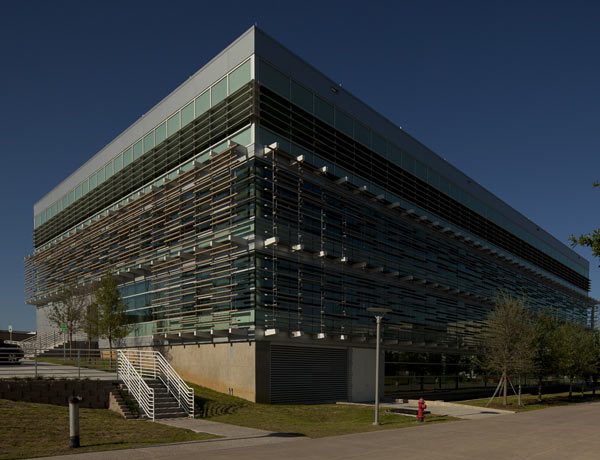The U.S. Green Building Council's Center for Green Schools, working in conjunction with its founding sponsor, United Technologies Corp., released its inaugural Best of Green Schools 2011 list recognizing school administrators and government leaders in 10 categories for their efforts to create sustainable learning environments.
Recipient schools and regions from across the nation - from K-12 to higher education - were recognized for a variety of sustainable, cost-cutting measures, including energy conservation, record numbers of LEED certified buildings and collaborative platforms and policies to green U.S. school infrastructure. Their commitments to measurable and innovative sustainable building goals serve as models for schools and campuses everywhere.
According to published reports, green schools save on average $100,000 per year on operating costs - enough to hire two new teachers, buy 200 new computers, or purchase 5,000 textbooks. On average, green schools use 33 percent less energy and 32 percent less water than conventionally constructed schools, and if all new U.S. school construction and renovation went green today, the total energy savings alone would be $20 billion over the next 10 years.
The recipients include:
- Moment for the Movement - U.S. Department of Education, Green Ribbon Schools: Green Ribbon Schools is the first comprehensive and coordinated federal initiative to focus on the intersection of environment, health and education.
- Region - Sacramento area: Mayor Kevin Johnson has led the charge to bring together mayors and superintendents from across the Northern California region to create a $100 million revolving loan fund for green school retrofits.
- State - Ohio: With 315 LEED registered and certified projects, including 19 schools registered in 2011, Ohio leads the nation with more green school projects underway than any other state.
- City - Philadelphia: The School District of Philadelphia made significant steps in 2011 toward the greening of the city's 291 public schools.
- School - Lake Mills Middle School (Lake Mills, Wisc.): In March 2011, Lake Mills Middle School became the first public school in the nation to achieve LEED Platinum certification.
- Higher Ed Innovator - University of Texas at Dallas: The University's new LEED Platinum Student Services Building, which was the recipient of this year's Innovation in Green Building Award, was designed to improve departmental efficiency and interaction, includes terra-cotta shades on the building's exterior to provide a unique energy efficient shading strategy and was built $1.1 million under budget.
- Collaborators - Kentucky Reps. Jim DeCesare (R) and Mary Lou Marzian (D): This bipartisan team has led Kentucky's green school efforts and is a model for teaming on green school collaboration. Together, they've worked with their colleagues in the Kentucky General Assembly to unanimously adopt resolutions in support of green schools, and have encouraged other states to work across party lines on similar efforts.
- Convener - Boston: In September 2011, Mayor Menino hosted the Research Summit on Childhood Health and School Buildings, which brought together a team of interdisciplinary researchers to explore the connection between school facilities and student health. Boston's public school district is also home to one of the first Center for Green Schools Fellows - a sustainability coordinator who will work within the school district for three years, bringing together faculty, administration, facilities staff, teachers and students to advance whole-district sustainability initiatives.
- Policy makers - District of Columbia City Council: In May 2010, the Washington, D.C. council unanimously passed the Healthy Schools Act of 2010, building upon the District's existing LEED Silver requirement and encouraging schools to achieve LEED Gold certification. 2011 updates to the bill included participation in the U.S. Department of Education's Green Ribbon Schools program, making D.C. the first - before any state - to sign up for the voluntary federal program.
- K-12 Innovation - Public-Private partnership in Illinois: A report outlining a plan to green all K-12 schools in Illinois was released in March 2011 as a result of a public-private partner. BD+C
Related Stories
| Aug 11, 2010
Great Solutions: Healthcare
11. Operating Room-Integrated MRI will Help Neurosurgeons Get it Right the First Time A major limitation of traditional brain cancer surgery is the lack of scanning capability in the operating room. Neurosurgeons do their best to visually identify and remove the cancerous tissue, but only an MRI scan will confirm if the operation was a complete success or not.
| Aug 11, 2010
Great Solutions: Collaboration
9. HOK Takes Videoconferencing to A New Level with its Advanced Collaboration Rooms To help foster collaboration among its 2,212 employees while cutting travel time, expenses, and carbon emissions traveling between its 24 office locations, HOK is fitting out its major offices with prototype videoconferencing rooms that are like no other in the U.
| Aug 11, 2010
2009 Judging Panel
A Matthew H. Johnson, PE Associate Principal Simpson Gumpertz & HegerWaltham, Mass. B K. Nam Shiu, SE, PEVP Walker Restoration Consultants Elgin, Ill. C David P. Callan, PE, CEM, LEED APSVPEnvironmental Systems DesignChicago D Ken Osmun, PA, DBIA, LEED AP Group President, ConstructionWight & Company Darien, Ill.
| Aug 11, 2010
Inspiring Offices: Office Design That Drives Creativity
Office design has always been linked to productivity—how many workers can be reasonably squeezed into a given space—but why isn’t it more frequently linked to creativity? “In general, I don’t think enough people link the design of space to business outcome,” says Janice Linster, partner with the Minneapolis design firm Studio Hive.
| Aug 11, 2010
BIM school, green school: California's newest high-performance school
Nestled deep in the Napa Valley, the city of American Canyon is one of a number of new communities in Northern California that have experienced tremendous growth in the last five years. Located 42 miles northeast of San Francisco, American Canyon had a population of just over 9,000 in 2000; by 2008, that figure stood at 15,276, with 28% of the population under age 18.







